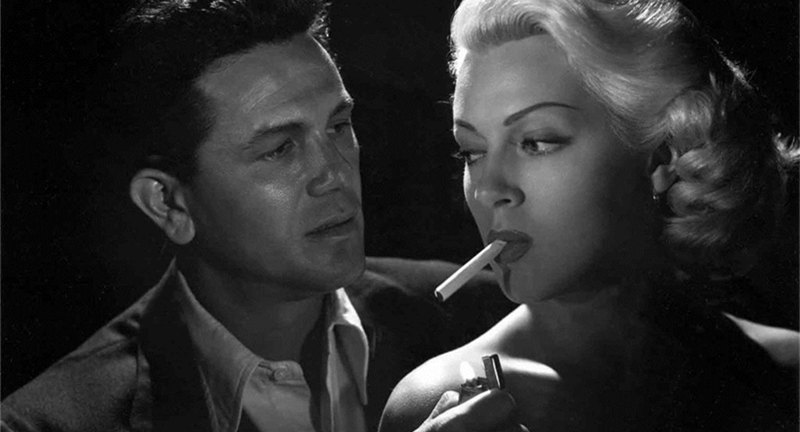This is one of those legendary films where, if you haven’t seen it, you watch expecting something epic, just because of all the people you’ve heard talking about it. That’s because “Kiss of the Spider Woman” was the first independent film to receive an Oscar nomination in four out of five “big” categories: Best Actor (William Hurt), Best Director (Hector Babenco), Best Screenplay (Leonard Schrader), and yes, Best Picture (David Weisman, producer). Only Hurt won, for his sensitive portrayal of a flamboyantly gay prisoner, but the movie’s mythology grew from there, and that’s amazing, really, when you consider that it opened in the U.S. on a single screen and earned just $55,962.
The film is based on the 1976 novel by Argentine writer Manuel Puig, who later adapted his dialogue-centric work of fiction into a stage play, and eight years after this film version was released, “Spider Woman” came to Broadway as a musical. The novel itself was semi-experimental. insomuch as it was written completely in dialogue–no description, and no narrative voice. That put the burden on the words themselves and on the imaginations of the readers.
No such burden is required of viewers in the film version. The first voice we hear is Hurt’s, who plays Luis Molina, a flamboyantly gay man who was arrested for corrupting a minor. He’s been tossed into the same cell as a scruffy political prisoner named Valentin Arregui (Raul Julia), who’s been tortured before and who will be tortured again. With the soft, feminine Molina wrapping himself in a Carmen Miranda-style outfit and prancing about the cell telling romantic stories to pass the time, if this were an American film or a mainstream movie Arregui would have been sharpening a shiv to use in case this guy tried something funny, or at the very least shouting “GUARD!” But this is a film written and directed by Argentines, and so what unfolds is the oddest of “Odd Couple” stories that involves not just the passage of time, but a growth experience for each of the men–Molina turning more politically responsible, and Arregui becoming more understanding of someone like his cellmate, a woman trapped in a man’s body. There are tender (or gross, depending upon how it affects YOU) moments that reinforce the narrowing of the gap between the men, a gap we first see when the cameras pan an artful 360 opening shot that establishes not just the dimensions of the cell but the tone and parameters of the film, as well. But because the film also opens with a story within a story, you know you’re in for not just another prison flick.
Though the country is never identified, you know this takes place somewhere in South America, and Arregui is the classic Latino macho man whose disdain for homosexuals and the romantic stories Molina tries to tell him are as obvious as all of the scars that mar his body. But Molina persists, arguing that it’s the only way he can escape the cell-hell both men share, and eventually Arregui goes from disdain to tolerance and, finally, acceptance of Molina and his stories.
This is an artful film, and Hurt and Julia wanted “in” so badly that they reportedly agreed to work for nothing. If you’re not into character-driven dramas and flights of fancy as substitutions for “real” plots, however, you might not care for it, because the Nazi-era story within a story involving a made-up woman called the Spider Woman (Sonia Braga) is a pastiche of WWII melodramas–as exaggerated as Molina’s affectations–and those stories take up most of the film. But things become more complicated when other stories are interwoven as well, and when Arregui begins to both soften toward his cellmate and starts to challenge him to become more political.
Robert Zemeckis may have worked wonders with a one-person cast and a limited location, but Hector Babenco is equally accomplished in his handling of two characters in confinement, with the added burden of trying to hold not just Arregui’s attention but the audience’s until the relationship between Molina’s story and their movie reality become clearer. This film depends upon small details and small reveals, and for that reason I’ll not tell much more except to add that the performances are wonderful, once you get past the idea of such an obvious Caucasian as Hurt passing for South American. It’s a strange film that becomes stranger with every viewing, but one which remains consistently mesmerizing. You watch hoping to solve the mystery of the film’s relevance just as the story-within-a-story invites you to guess outcomes in Molina’s melodramatic telling of an old Nazi crime drama in film. The ending may seem a bit facile, but everything that leads up to it is something that will replay in your mind the way that Molina’s stories do for him.
Video:
“Kiss of the Spider Woman” is presented in 1.85:1 anamorphic widescreen. This film was intended to have several different looks, with some sections deliberately grainy to reflect the gritty reality and other sections like the pastiche of WWII romance movies a little brighter in their colors and slicker on the surface. In other words, don’t expect a heavily processed-looking film. This is an independent film, and it looks like it.
Audio:
The featured audio is an English Dolby Digital 5.1 Surround, with additional options in English, French, and Spanish Dolby Digital 1.0 Mono and subtitles in English, French, and Spanish. The 5.1 mix almost feels like overkill at times, though, because this mostly-dialogue film channels just about everything through the front and center speakers. There’s some ambient sound that emerges in some of the Nazi movie scenes, but here too don’t expect much other than clarity. It’s not nearly anything approaching a dynamic soundtrack.
Extras:
This two-disc DVD from City Lights should please fans of the film, because disc two houses a 108-minute feature (“Tangled Web: Making Kiss of the Spider Woman”) that’s a nice complement to the 120-minute film. Puig, Hurt, Babenco, Julia, and producers David Weisman and Leonard Schrader appear on-camera to talk about this odd film’s odyssey from novel to big screen. It’s better than most making-of features because of the depth of thought and information presented. Also on disc two is a mini-documentary featuring Manuel Puig talking about “The Submissive Woman’s Role,” a little featurette on the Broadway version with Hal Prince, Kander and Ebb, Chita Rivera, Terrence McNally, and Puig appearing. Roudning out the bonus features is a slide show with commentary telling more about the transition from the page to the screen, and finally a 150+ image photo gallery of stills, behind-the-scenes shots, and production images.
The only features on Disc one are a trivia track that’s available in both English and Spanish and the original theatrical trailer.
Bottom Line:
“Kiss of the Spider Woman” is ultimately a lesson in hope, an illustration that proves somewhat empirically that the forces that repel humans are not as strong as the commonalities that bond them. This film not only opened the door for independent films, but for gay characters in film.


